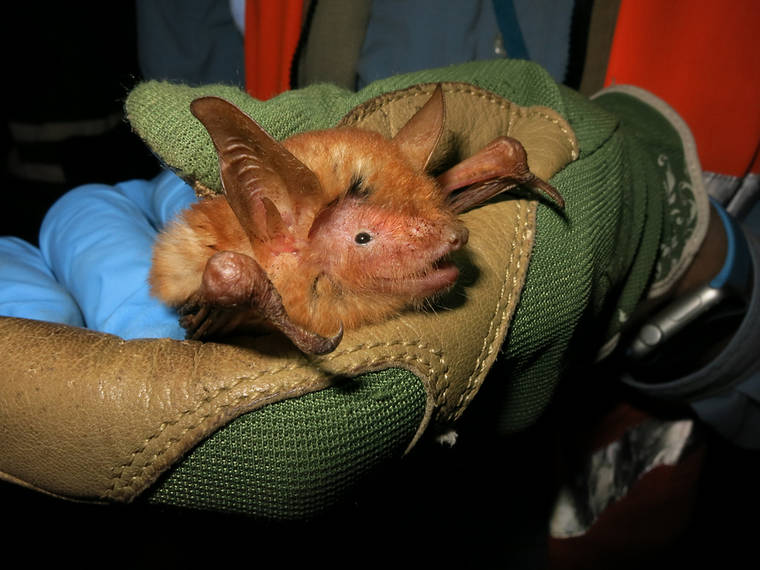In 2018, scientists set out on an expedition to survey the habitat of an endangered bat species in the West African country of Guinea. One night, a trap turned up something unusual: a new species of bat with a fiery orange body strikingly juxtaposed with black wings.
“It was kind of a life goal in a way, one that I never thought would happen,” said Jon Flanders, director of endangered species interventions at Bat Conservation International, a nonprofit organization based in Austin, Texas.
There are more than 1,400 species of bats, and every year more than 20 join the list. Mostly, though, these are lab-based discoveries.
Just happening upon a new bat species in nature is something entirely different.
“This sort of situation where experienced researchers went out in the field and caught an animal and held it in their hand and went, ‘This is something we can’t identify,’ that’s much more unusual,” said Nancy Simmons, curator of mammals at the American Museum of Natural History in New York and chairwoman of the global bat taxonomy group at the International Union for Conservation of Nature.
The new orangutan-hued bat, Myotis nimbaensis, lives in Guinea’s Nimba mountains, a verdant series of mile-high peaks rich in biodiversity “just plonked in the middle of this otherwise flat landscape,” Flanders said.
He and his colleagues set out to survey long-abandoned mining tunnels that have become a favorite home to the region’s endangered bats. When they found a fuzzy, pumpkin-orange animal mixed in with the usual brown ones in their trap, they thought it must just be an oddly colored individual.
“When I saw it for the first time, I thought it was a common species,” said Eric Bakwo Fils, a conservation biologist and bat expert at the University of Maroua in Cameroon.
Looking through their identification guides, however, Bakwo Fils and Flanders could not confirm a match with any other African species.
The researchers also conducted a genetic analysis, which revealed that M. nimbaensis is at least 5% different from its closest related relatives. They described their findings Wednesday in the journal American Museum Novitates.
Now that the new species confirmation is official, the next step is to learn about M. nimbaensis’ ecology. “The more we know about it, the more we’ll know how to protect it as well,” Flanders said.
© 2021 The New York Times Company

